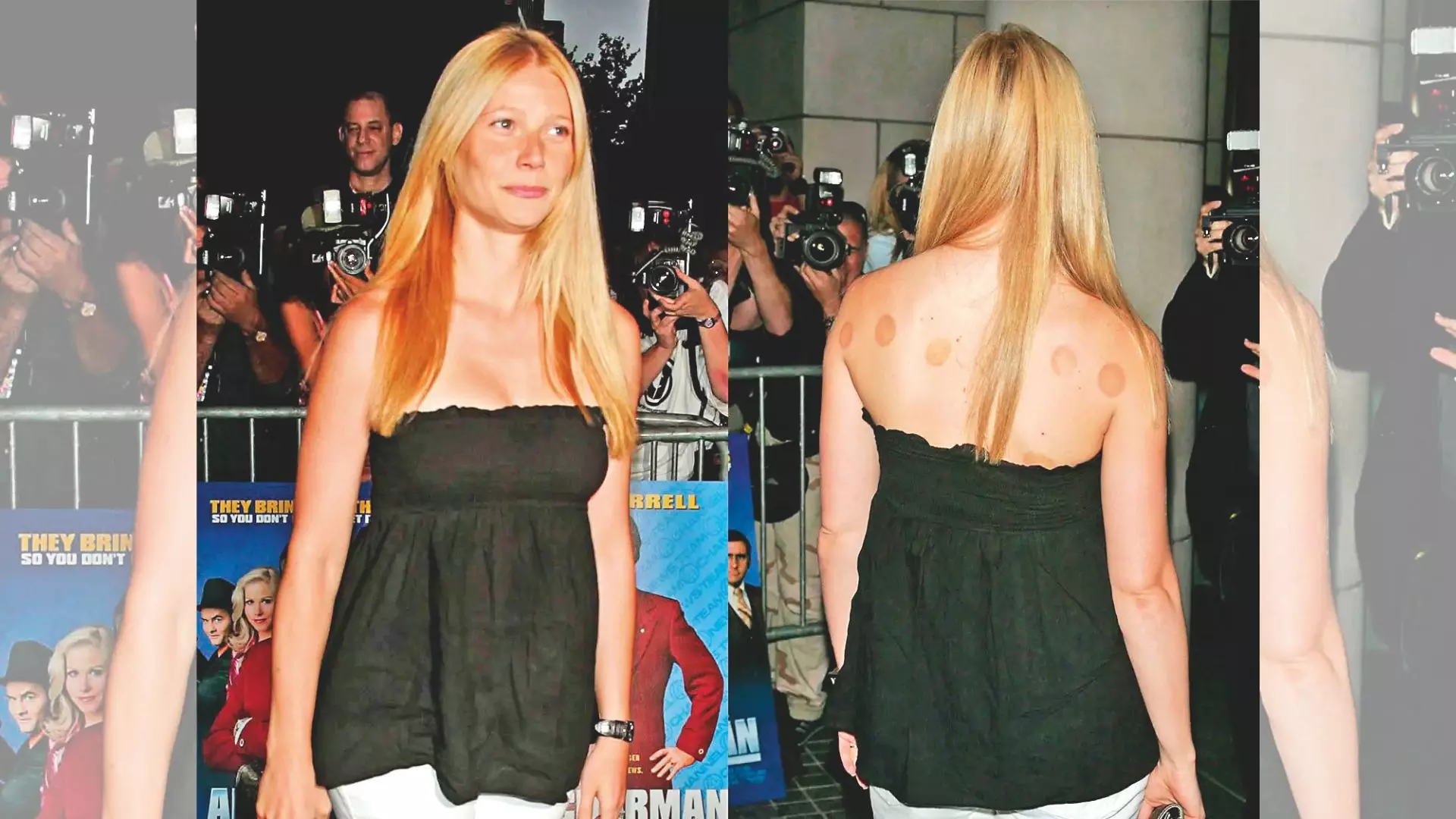A cup of relief
The arena of alternative medicine is flooded with new-age concepts and redefined approaches to medical treatments that are different from traditional or mainstream therapies. One such route to healing is the resurgence of cupping therapy, also known as horn treatment or Hijama in Arabic. It is a kind of suction or vacuum therapy wherein specialised cups are placed on the patient’s skin surface to inflate the underlying tissue. Experts weigh in

If you are looking for an antidote to several ailments that leave an emphatic impression on your body, then a cupping regime is the perfect response to your quest. It leaves its imprints behind after the therapeutic sessions and the receiver could flaunt those dark red and bold purple marks on his/her bare body like tattoo designs. Well, many don’t mind getting inked as a fashion fad. Do they?
Cup of Wellness
“Cupping is an age-old regime, a holistic method of treating a variety of diseases. It is now considered an effective form of alternative medicine and is available as one of the best deep tissue therapies. It is a procedure that resets the mind, body and soul,” explains Hr. Imranali Sayed, a skilled and experienced practitioner of Hijama and a specialist in cupping massage therapy.
Cupping can be traced back to the ancient roots of human civilisation. “It dates back to the centuries of yore. An expert or a professional cupping therapist uses cups typically made of glass, plastic or silicone and apply the same to the skin, creating a vacuum effect through suction. Practitioners claim that the suction stimulates local blood flow to the targeted areas, thus initiating the mending process and reducing inflammation,” informs consultant physiotherapist Dr. Chinmoy Medhi.
The manifold purpose of cupping involves elimination of toxins, increasing immunity, relieving muscular tension and easing pain. “Some people also resort to cupping to gain relief from chronic aches, improve their general well-being and experience relaxation. The practice was founded on the principles of erstwhile Chinese and Middle Eastern medicines,” shares Dr. Medhi, who also owns his Delhi-based Rony Physio clinic.
Dry & Wet Cupping
Though there are several types of cupping, the healthy practice is broadly classified into dry and wet cupping. “Dry cupping activates the lymphatic system, releases muscular knots or adhesions and initiates detoxing, while wet cupping ejects poisons from the body along with blood discharge. Wet cupping is best used for precaution, plus complimentary and recuperative treatment. It should only be done by a learned pro who has thoroughly studied and mastered human anatomy and is much aware of its sterile and aseptic procedures,” elucidates Sayed.
Decoding the widely-known categories of cupping, Dr. Medhi summarises that “in dry cupping, you put these cups on your skin and then create a suction-like air pressure without causing any puncture or perforation. This leads to a seamless blood flow, alleviating muscle tension, which may or may not be connected to specific diseases, and accelerate the healing process.”
The wet counterpart, he ascertains, is “nearly the same as the dry needling. However, before applying the Soprano’s ICE cooling technology, your physician will prick your skin. As the air is suctioned out, it draws a small amount of blood from the body, which then stimulates the release of toxins and assists in promoting fast healing activity as the best therapeutic outcome.”
Popular Pick
Cupping therapy is a huge craze among sportspersons like athletes, swimmers and gymnasts. Athletes require muscles and tissues to heal as quickly as possible to be in good shape, maintain their fitness programmes and retain high-performance levels. They can gain from cupping therapy as the results show and return to their training routine soon.
“They find it extremely beneficial as it immediately releases the tightened hard fascia (a layer of sturdy, elastic tissue that covers, detaches or ties together different organs, muscles, blood vessels and nerves) and the contracted muscle tissues, resulting in pain reduction, joint mobilisation, lymph drainage, movement of stagnation, athletic performance enhancement and so on,” reasons Sayed.
From American swimmers Michael Phelps and Katie Ledecky to Italian swimmer Niciolò Martinenghi and even the entertainment fraternity including Jennifer Anniston, Gwyneth Paltrow, Kim Kardashian or Padma Lakshmi, all swear by the cupping therapy, proudly exposing their skin marks in public.
Steps in detail:
The first and foremost thumb rule in the process is to clean the area to be cupped under hygienic conditions.
After applying oil, a partial vacuum is created in cups placed on the skin with the help of the suction gun or machine.
The utmost care is taken of the incisions after a few minutes where blood stasis is formed.
The cups are reapplied to withdraw the blood from the incisional areas.
In cupping therapy, the cups are used for suctioning either by applying heat (fire cupping) to burn up all oxygen and then quickly placing them on the skin or with a mechanical pump.
Sometimes, a cotton ball soaked in alcohol is ignited inside the cup, which suctions out the atmospheric air to create a vacuum, much as opposed to the modern practices that incorporate pumps or squeezable silicone cups.
After 5-15 minutes, the cups are removed and this encourages blood flow to aid in the healing process.
The process conducted in these positions may induce soreness and stiffness with circular marks on the respective patient’s skin that should all wash away within a day or so.
The therapy is flexible and employs different materials and techniques hinging on the objectives of the treatment.
